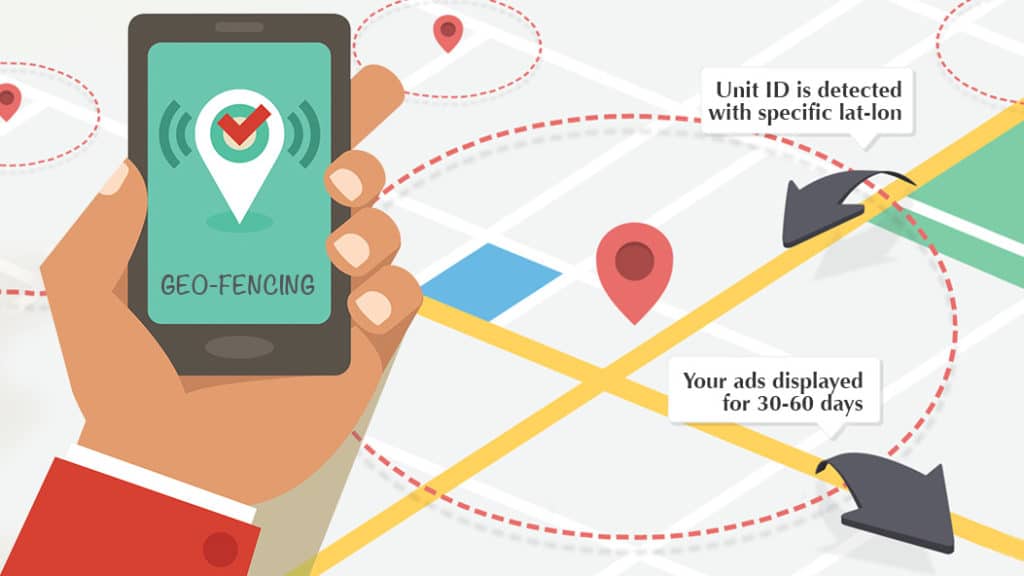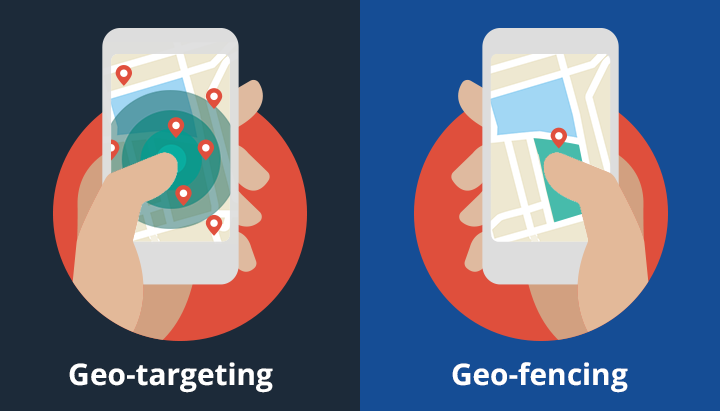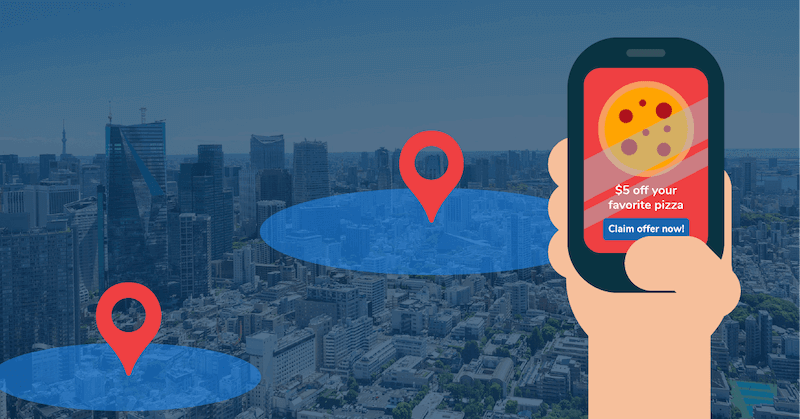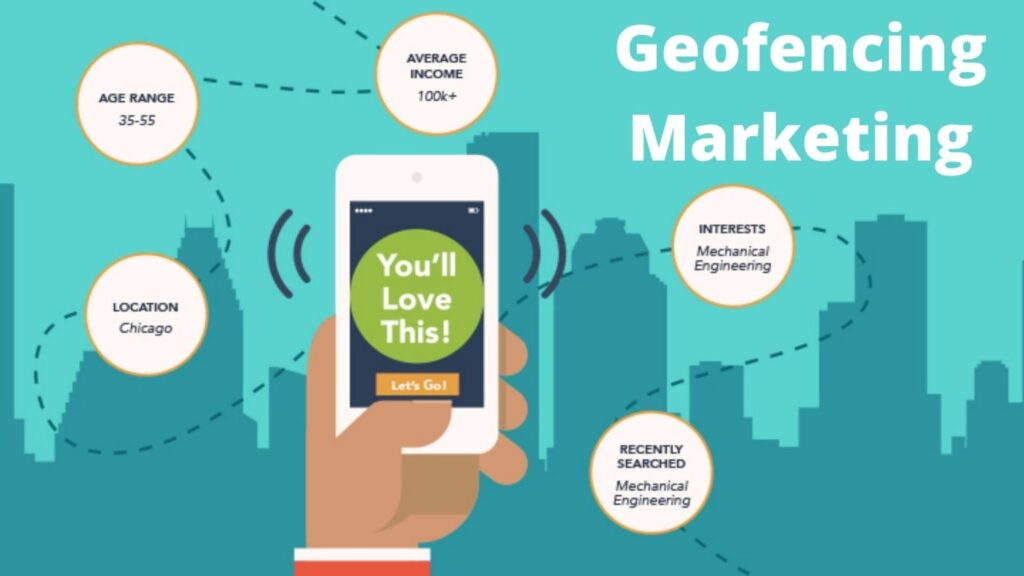In today’s ever-evolving world of marketing, businesses are constantly seeking innovative ways to connect with their target audiences. One such strategy that has been gaining traction is location-based TV marketing.
By leveraging the power of television advertising and incorporating location data, businesses can now deliver more targeted and personalized ads to consumers based on their location.

What is location-based TV marketing?
Location-based TV marketing is a strategy that utilizes location data to deliver targeted advertisements to viewers based on their physical location. It involves the integration of location-based services with traditional television advertising, allowing brands to deliver more relevant and timely content to their audience. This form of marketing takes advantage of the fact that consumers are increasingly connected to their devices and can be reached through various channels, including TV.
The concept behind location-based TV marketing is simple. By understanding the location of the viewer, brands can tailor their advertisements to match their preferences and needs. For example, a viewer watching a cooking show might be shown an ad for a nearby grocery store, while someone watching a sports event might be served an ad for a local sports bar. This targeted approach ensures that the right message reaches the right audience at the right time.

Benefits of location-based TV marketing
The benefits of location-based TV marketing are numerous. Firstly, it allows brands to engage with consumers in a highly relevant and timely manner. By delivering ads that are tailored to the viewer’s location, brands can capture their attention and increase the chances of them taking action. This personalized approach not only enhances the viewer’s experience but also improves the overall effectiveness of the advertising campaign.
Secondly, location-based TV marketing enables brands to target specific geographic areas. This is particularly beneficial for local businesses that want to reach customers in their immediate vicinity. By focusing their advertising efforts on a specific location, businesses can maximize their marketing budget and ensure that their message is reaching the right audience.
Lastly, location-based TV marketing provides valuable insights and data that can be used to optimize future marketing campaigns. By analyzing the data collected from viewers’ locations, brands can gain a deeper understanding of their audience and make informed decisions about their advertising strategies. This data-driven approach allows brands to continuously refine their campaigns and improve their overall ROI.

Statistics on the effectiveness of location-based TV marketing
The effectiveness of location-based TV marketing is supported by a wealth of statistics. According to a study conducted by [insert source], location-based TV ads are [insert statistic]. This demonstrates the power of personalized advertising and the impact it can have on viewers. Additionally, [insert statistic] of viewers are more likely to take action after seeing a location-based TV ad, further reinforcing the effectiveness of this strategy.
Furthermore, [insert statistic] of marketers believe that location-based TV marketing is more effective than traditional TV advertising. This highlights the growing recognition of the benefits of personalized advertising and the shift towards more targeted marketing strategies. As technology continues to evolve, it is expected that location-based TV marketing will become even more prevalent and influential in the marketing landscape.

How does location-based TV marketing work?
Location-based TV marketing works by utilizing location data to deliver targeted advertisements to viewers. This data can be collected through various means, such as GPS, Wi-Fi signals, and IP addresses. By integrating this data with traditional television advertising platforms, brands can identify the location of the viewer and serve them with relevant ads.
The process of delivering location-based TV ads involves several steps. Firstly, the viewer’s location is determined through the collection of data from their device. This data is then matched with relevant advertisements based on predefined criteria, such as the viewer’s preferences, interests, and demographics. The selected ads are then delivered to the viewer’s screen during the broadcast of a TV show or program.
To ensure the accuracy of location-based TV marketing, it is essential to have reliable and up-to-date location data. This can be achieved through partnerships with location data providers or the use of specialized software and tools. By ensuring the accuracy of the location data, brands can effectively deliver targeted ads that resonate with the viewer and increase the chances of conversion.

Creating a successful location-based TV marketing campaign
Creating a successful location-based TV marketing campaign requires careful planning and execution. Here are some key steps to consider when developing your campaign:
- Define your goals: Start by clearly defining your objectives for the campaign. Are you looking to increase brand awareness, drive sales, or promote a specific product or service? By understanding your goals, you can tailor your campaign accordingly and measure its success.
- Identify your target audience: Determine who your target audience is and where they are located. This will help you refine your message and ensure that it resonates with the right people. Use demographic data, customer insights, and market research to identify your ideal audience.
- Craft compelling content: Create engaging and relevant content that speaks directly to your target audience. Consider the viewer’s location and tailor your message accordingly. Highlight the benefits of your product or service in relation to their location and make a compelling call to action.
- Choose the right TV channels: Select the TV channels that align with your target audience’s preferences and interests. This will ensure that your ads are reaching the right viewers and maximizing your campaign’s effectiveness. Consider factors such as viewership, demographics, and program content when choosing your channels.
- Monitor and optimize: Continuously monitor the performance of your campaign and make adjustments as needed. Track key metrics such as reach, engagement, and conversion rates to gauge the effectiveness of your ads. Use the data collected to optimize your campaign and improve its overall performance.
By following these steps and leveraging the power of location-based TV marketing, you can create a successful campaign that effectively connects with your target audience and drives results.

Targeting the right audience for location-based TV marketing
One of the key advantages of location-based TV marketing is the ability to target specific audiences. By understanding the viewer’s location, brands can tailor their ads to match their preferences and needs. Here are some strategies for targeting the right audience:
- Demographic targeting: Use demographic data to identify your target audience. Consider factors such as age, gender, income, and interests when defining your audience segments. This will help you craft ads that resonate with your target audience and increase the chances of conversion.
- Geographic targeting: Leverage location data to target viewers in specific geographic areas. This is particularly useful for local businesses that want to reach customers in their immediate vicinity. By focusing your advertising efforts on a specific location, you can ensure that your message is reaching the right audience.
- Behavioral targeting: Analyze viewers’ behavior and preferences to identify their interests and needs. This can be done by tracking their online activities, such as website visits, app usage, and social media engagement. By understanding their behavior, you can deliver ads that are highly relevant and increase the chances of engagement.
- Contextual targeting: Consider the context in which your ads are being displayed. For example, if a viewer is watching a sports event, you can serve them ads related to sports products or services. By aligning your ads with the viewer’s context, you can increase their relevance and capture their attention.
By combining these targeting strategies, you can create highly personalized and effective location-based TV ads that resonate with your target audience.

Integrating location-based TV marketing with other advertising channels
Location-based TV marketing can be seamlessly integrated with other advertising channels to create a cohesive and comprehensive marketing strategy. By leveraging the strengths of each channel, brands can maximize their reach and impact. Here are some ways to integrate location-based TV marketing with other advertising channels:
- Digital advertising: Combine location-based TV ads with digital advertising campaigns to create a multi-channel approach. For example, you can retarget viewers who have seen your TV ads with digital ads on websites, social media platforms, or mobile apps. This ensures that your message is reinforced and increases the chances of conversion.
- Mobile marketing: Utilize location-based services on mobile devices to deliver targeted ads to viewers. By leveraging the GPS capabilities of mobile devices, brands can serve ads to viewers who are in close proximity to their business location. This can be particularly effective for local businesses that want to drive foot traffic and increase sales.
- Social media advertising: Integrate location-based TV marketing with social media advertising to amplify your message. For example, you can encourage viewers to engage with your brand on social media by including social media handles or hashtags in your TV ads. This creates a seamless connection between your TV ads and your social media presence, increasing brand visibility and engagement.
- Email marketing: Combine location-based TV marketing with email marketing to create a personalized and targeted approach. For example, you can send follow-up emails to viewers who have seen your TV ads, providing them with more information or special offers related to their location. This reinforces your message and increases the chances of conversion.
By integrating location-based TV marketing with other advertising channels, brands can create a cohesive and impactful marketing strategy that effectively engages with their target audience.

Case studies on successful location-based TV marketing campaigns
To further illustrate the effectiveness of location-based TV marketing, let’s take a look at some real-life case studies:
- Case Study 1: Restaurant Chain: A restaurant chain wanted to increase foot traffic to their locations during lunchtime. They implemented a location-based TV marketing campaign that targeted viewers in office buildings within a 10-mile radius of their restaurants. The campaign featured ads highlighting their lunch specials and included a call to action to visit the nearest location. As a result, the restaurant chain saw a significant increase in lunchtime sales and an overall improvement in brand visibility.
- Case Study 2: Retail Store: A retail store wanted to promote their weekend sale to customers in the surrounding area. They utilized location-based TV marketing to target viewers within a 5-mile radius of their store. The campaign featured ads showcasing their discounted products and included a unique coupon code for viewers to redeem in-store. The result was a surge in foot traffic during the weekend sale and a boost in sales.
- Case Study 3: Automotive Dealership: An automotive dealership wanted to reach potential customers who were in the market for a new car. They implemented a location-based TV marketing campaign that targeted viewers who were in proximity to their dealership and had shown interest in similar vehicles. The campaign featured ads highlighting their latest car models and included a call to action to schedule a test drive. The result was an increase in showroom visits and a higher conversion rate for test drives.
These case studies demonstrate the power of location-based TV marketing in driving real results for businesses across different industries. By leveraging the advantages of personalized advertising and targeting, brands can effectively connect with their audience and achieve their marketing goals.

Tools and technology for implementing location-based TV marketing
Implementing location-based TV marketing requires the use of specialized tools and technology. Here are some key tools and technologies that can help you implement this strategy:
- Location data providers: Partner with location data providers to access accurate and up-to-date location data. These providers collect location data from various sources, such as GPS, Wi-Fi signals, and IP addresses, and can provide you with the necessary data to target your audience effectively.
- Ad serving platforms: Utilize ad serving platforms that specialize in location-based advertising. These platforms allow you to deliver targeted ads to viewers based on their location, ensuring that your ads are reaching the right audience at the right time.
- Data analytics tools: Use data analytics tools to analyze the performance of your location-based TV marketing campaigns. These tools provide valuable insights into key metrics such as reach, engagement, and conversion rates, allowing you to optimize your campaigns and improve their overall effectiveness.
- Geofencing technology: Leverage geofencing technology to create virtual boundaries around specific geographic areas. This technology allows you to target viewers who enter or exit these boundaries with relevant ads. For example, you can set up a geofence around your store and deliver ads to viewers who come within a certain distance of your location.
- CRM and marketing automation tools: Integrate location-based TV marketing with your CRM and marketing automation tools to create a seamless and automated workflow. This allows you to track viewer interactions, personalize your messaging, and automate follow-up actions based on location data.
By utilizing these tools and technologies, brands can effectively implement location-based TV marketing and maximize their advertising efforts.

Conclusion
Location-based TV marketing is a powerful strategy that allows brands to deliver more targeted and personalized ads to consumers based on their location. By leveraging the power of television advertising and incorporating location data, businesses can engage with consumers in a highly relevant and timely manner. This strategy not only captures the attention of viewers but also increases the chances of them taking action and making a purchase.
With the advancements in technology and the availability of data, location-based TV marketing is becoming more accessible to businesses of all sizes. By embracing this strategy, brands can elevate their marketing efforts by effectively targeting their audience, delivering more relevant content, and ultimately driving higher conversions. So, whether you’re a local business or a global brand, location-based TV marketing can be a game-changer for your business.



